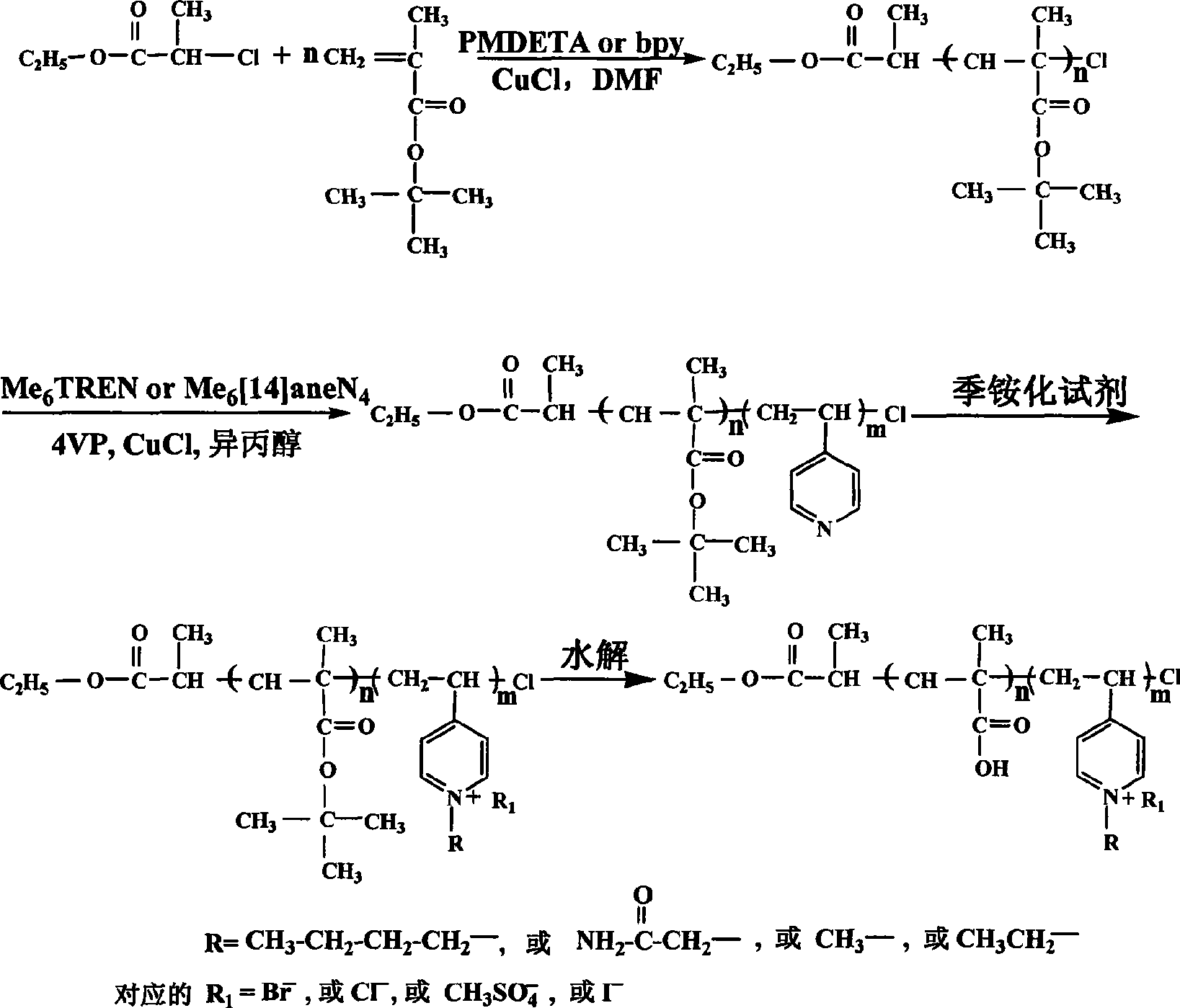Method for preparing double-hydrophilic block copolymer
A block copolymer, water-based technology, applied in the field of functional polymer preparation, can solve the problems of harsh reaction conditions, limited range of applicable monomers, etc., and achieve the effects of uniform molecular weight distribution, wide range of applicable monomers, and simple operation
- Summary
- Abstract
- Description
- Claims
- Application Information
AI Technical Summary
Problems solved by technology
Method used
Image
Examples
Embodiment 1
[0024] The first step: preparation of macroinitiator PtBMA-Cl
[0025] At room temperature, sequentially add quantitative PMDETA or bpy, CuCl, tBMA, ECP and a certain amount of DMF into the three-necked flask, stir well, and seal it after passing nitrogen gas for 30 minutes. React in an oil bath at 70-80°C for a predetermined time, take out the three-necked flask to cool, dissolve the reaction product with THF, and pass the solution through an alumina glass column to remove residual CuCl. Precipitation and suction filtration were carried out with methanol:water volume ratio 1:1, and the product was re-dissolved and precipitated twice, then vacuum-dried to constant weight to obtain the PtBMA-Cl macroinitiator.
[0026] The second step: preparation of PtBMA-b-P4VP block copolymer
[0027] At room temperature, add PtBMA-Cl, Me 6 TREN or Me 6 [14]aneN 4 , CuCl, 4VP and a certain amount of solvent DMF, stir well, and seal it after passing nitrogen gas for 30 minutes. In an oil...
Embodiment 2
[0033] The reaction was carried out according to the steps described in Example 1, and in the third step, 2-chloroacetamide was used as the quaternization reagent. Add 10g block copolymer PtBMA-b-P4VP and 200mL DMF solvent into a round-bottomed flask. After stirring evenly, slowly add 2-chloroacetamide 1 to 5 times the molar weight of the P4VP structural unit at room temperature. Lower reaction 3~6h, follow-up steps are the same as embodiment 1.
Embodiment 3
[0035] The reaction was carried out according to the steps described in Example 1, and dimethyl sulfate was used as the quaternization reagent in the third step. Add 10g of block copolymer PtBMA-b-P4VP into a round bottom flask, 200mL of a mixed solvent with a volume ratio of methanol to ethylene glycol of 1:1, and slowly add 1 to 5 times the molar amount of the structural unit of the copolymer P4VP under stirring. Dimethyl sulfate, to ensure that all the pyridine rings in the copolymer are quaternized, react at room temperature for about 10 to 12 hours, and the subsequent steps are the same as in Example 1.
PUM
 Login to View More
Login to View More Abstract
Description
Claims
Application Information
 Login to View More
Login to View More - R&D
- Intellectual Property
- Life Sciences
- Materials
- Tech Scout
- Unparalleled Data Quality
- Higher Quality Content
- 60% Fewer Hallucinations
Browse by: Latest US Patents, China's latest patents, Technical Efficacy Thesaurus, Application Domain, Technology Topic, Popular Technical Reports.
© 2025 PatSnap. All rights reserved.Legal|Privacy policy|Modern Slavery Act Transparency Statement|Sitemap|About US| Contact US: help@patsnap.com

